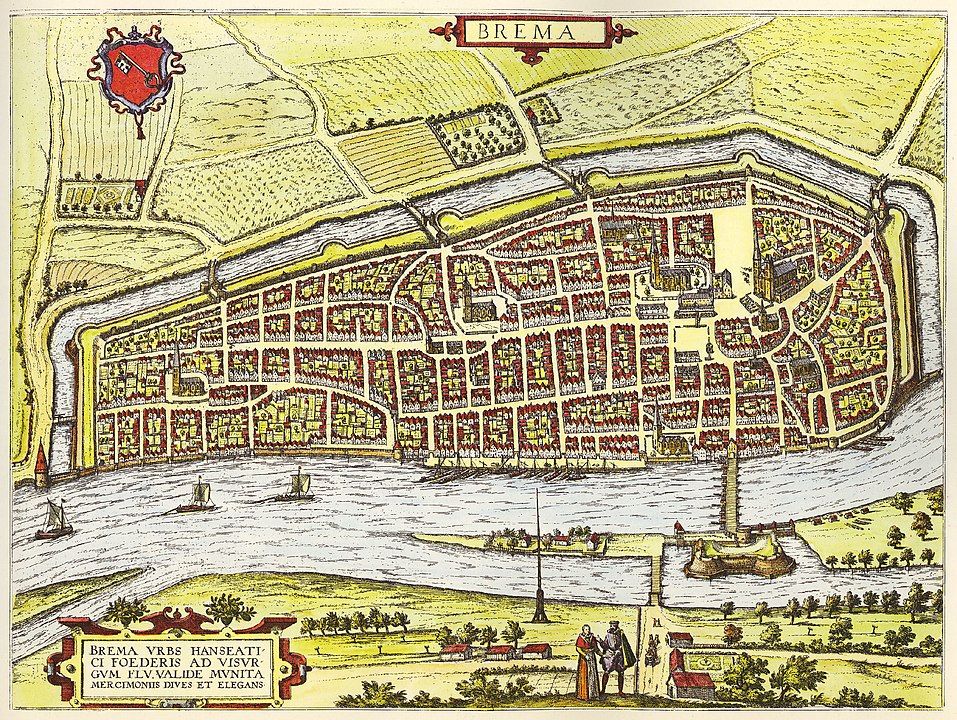Between the 1st and 8th centuries AD, the first settlements along the Weser River emerged, built on a long dune that provided protection from flooding while also offering good access to a ford. Bremen developed from a merchant town into an episcopal city. In 845, Bremen became an archbishopric and finally gained more influence within the Empire. In 1260, the city joined the Hanseatic League, but was at times an unreliable partner. Nevertheless, Bremen grew due to the free trade it owed to the Hanseatic League. The magnificent buildings from this period can still be admired today. The increasingly economically important city partially freed itself from the rule of the Bishopric of Bremen. As a symbol of their secular freedom, they erected the Roland statue (1404) and their town hall (1409) on Bremen's marketplace. Today, both are UNESCO World Heritage sites. To protect the Weser harbor, built between 1574 and 1590, the fortified Neustadt was established on the western bank of the Weser. However, the Weser increasingly silted up, and it became more difficult for merchant ships to dock at the Schlachte, which had been used as a seaport since the 13th century. Therefore, from 1619 to 1623, Dutch engineers built Germany's first artificial harbor downstream in Vegesack, after the Bremen Senate succeeded in purchasing a large, suitable area of land from the Kingdom of Hanover at the mouth of the Geeste River into the Outer Weser.
History of Bremerhaven
The oldest written record of settlement in what is now Bremerhaven dates back to 1139. In 1924, Lehe and Geestemünde merged to form the independent city of Wesermünde. In 1939, Bremerhaven, with 26,790 inhabitants, and Wesermünde, with 86,041 inhabitants, were declared the new major city of Wesermünde with 113,000 inhabitants. In 1947, Wesermünde was incorporated into the state of Bremen and renamed Bremerhaven.

Checkliste Thema Bremen
Zum Bearbeiten der Zelle doppelt klicken
SHIFT für Mehrfachauswahl


